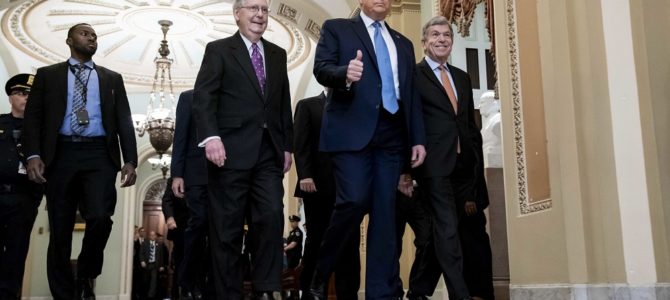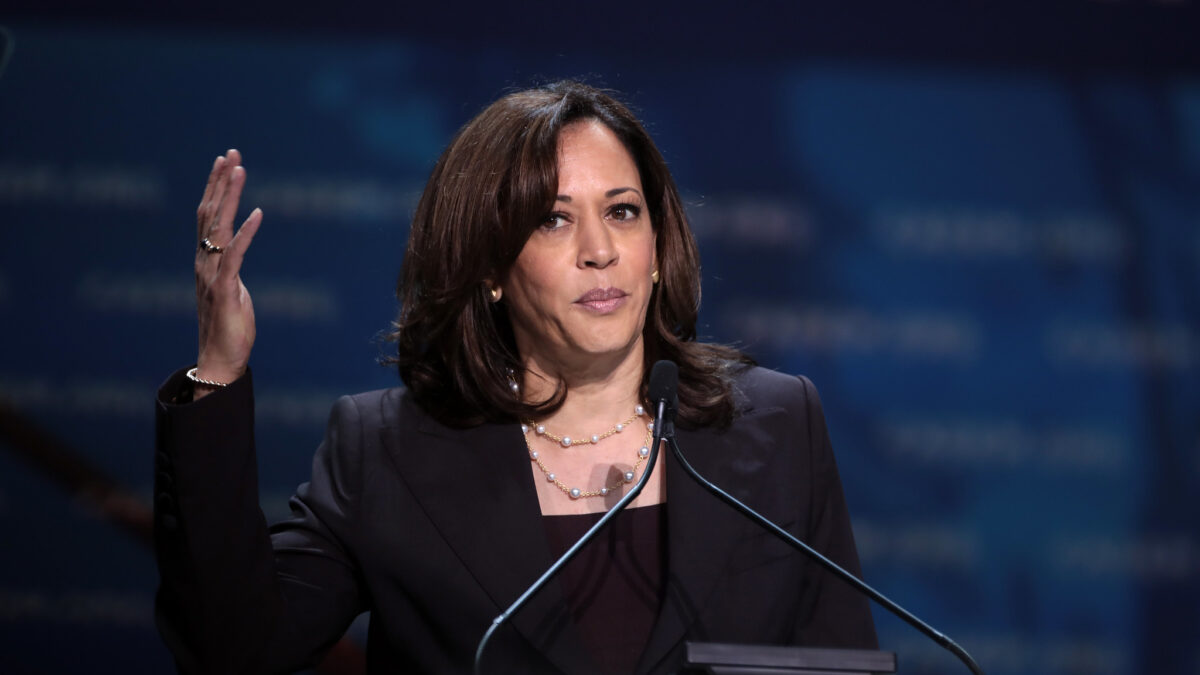
Senate Majority Leader Mitch McConnell made a terrible mistake Tuesday night when he released word that he was in favor of impeaching President Donald Trump. This mistake goes well beyond a simple political miscalculation. It is the physical manifestation of Washington Republican hubris, wrapped in a fog of frightened groupthink.
Announced the eve of the House impeachment vote in the pages of The New York Times, McConnell’s plan reportedly rested on the belief that impeaching the outgoing president “will make it easier to purge Mr. Trump from the party.” Published just after the No. 3 House Republican, Conference Chairwoman Liz Cheney, announced her intention to vote for impeachment, for a moment it appeared the still-Republican Senate might end up joining with the Democrats after all.
By early afternoon the following day, however, the situation on the ground had changed. By the time the sun set in Washington, only 10 of 195 House Republicans — or about 5 percent — had joined with Democrats. Meanwhile, conservative members of the House had begun whipping support for Cheney’s resignation from leadership; and nervous Republican senators were publicly turning against impeachment. Retreating, McConnell declared he no longer knew which way he would vote, and in a statement suggested the Senate might not be able to take up the trial on time after all.
And just like that, McConnell (and Cheney’s) plan to purge the party of the new populist right appears to have unraveled. So how did the worst laid plans of mice and Mitch go so quickly to pieces?
First, the rollout. House Republicans and most senators were caught completely off guard by McConnell’s reported change of heart. While it’s not wise to thumbtack plans to purge the party on the events bulletin board in the hall, Republicans are not accustomed to taking orders to march on their own voters from a newspaper that hates them all — and aren’t prepared to do so now.
House Minority Leader Kevin McCarthy, meanwhile, appears to have been caught by surprise by McConnell’s sneak attack, leaving him incapable of whipping House votes even if he’d had the time or inclination to do so. There’s no evidence he had either. Remember, the rank and file of Congress has changed: More than 40 percent of the D.C. GOP has been elected since Trump was the Republican nominee.
This alone didn’t mean that McConnell couldn’t lead impeachment proceedings against the president anyway: Speaker of the House Nancy Pelosi already had the numbers to impeach Trump with only Democratic votes. It did, however, send a strong message to Republican senators that the move to knife the man who had just won more votes than any Republican in history was no unified front. And now, it was a vote against nearly 95 percent of their House colleagues.
Second, the plan. McConnell’s plan was a very, very stupid plan; the kind more typically floated by a Politico reporter whose only friends work for Pelosi than by a veteran senator with a reputation for strategically doing nothing in the face of Democratic pressure to make a move.
As Ben Domenech explained in Wednesday morning’s issue of The Transom, the plan here would seriously threaten to rip the party “apart while dramatically increasing the likelihood that Donald Trump forms a third party — something his supporters would overwhelmingly welcome.”
“Eleventh hour impeachment functionally,” he added, “is an act of condemnation less for the president and more for the two-thirds of Republicans who still support him. It tells them they were wrong to cheer and clap and knock on doors and wave flags and make signs and drive in parades. It tells them CNN was right all along.”
Winning message right there, guys. Good plan.
Third, the voters. Trump’s voters are still here. Sure, no longer 74 million of them, but a lot more than it takes to give the majority of DC’s GOP the Georgia treatment. And many of them remember the events of the last four years well.
In Washington, bad memories can fade mercifully fast. A number of people I spoke with Tuesday night hadn’t thought of the leftwing mob’s August attack on the White House in months despite having been there, for example, until a Federalist article that morning drew out that fearful night like some kind of repressed memory therapy.
“Oh yeah,” some thought: “The attack on the Capitol is not the first time a politically goaded mob had violently attacked a sacred symbol of the republic — even if it is the first time CNN has cared.”
A lot of voters, however, did not bury the memory. Americans have been forced to suffer fringe left-wing violence since before Trump even won the nomination. This Inauguration Day will mark the four-year anniversary of Washington riots that left cars burning in the streets. What’s novel here is the reaction of America’s elites, which brings us to the final point.
The left. Since last week’s disgusting attack on the American Capitol, the titans of tech have decided to disenfranchise 74 million American Trump supporters. Not content with merely cancelling Instagram and Twitter accounts, they’ve targeted online payment systems and the very existence of websites they deem objectionable on little-to-no actual evidence of wrongdoing.
We’re beyond censorship now, folks. There’s a new system coming to big cities and small towns alike — and there’s no room for conservatives in it. Why, exactly, is this happening after years of tolerated and often celebrated political violence? Because this time, the mob wore red hats.
Amid this incredible assault on basic freedoms, McConnell and Co. hatched a plan: He would tell The New York Times to announce the Republican impeachment of President Donald Trump. It was not a very good plan, but there will be others. The populist right is still alive and well, and that, the likes of Cheney and McConnell cannot abide.









